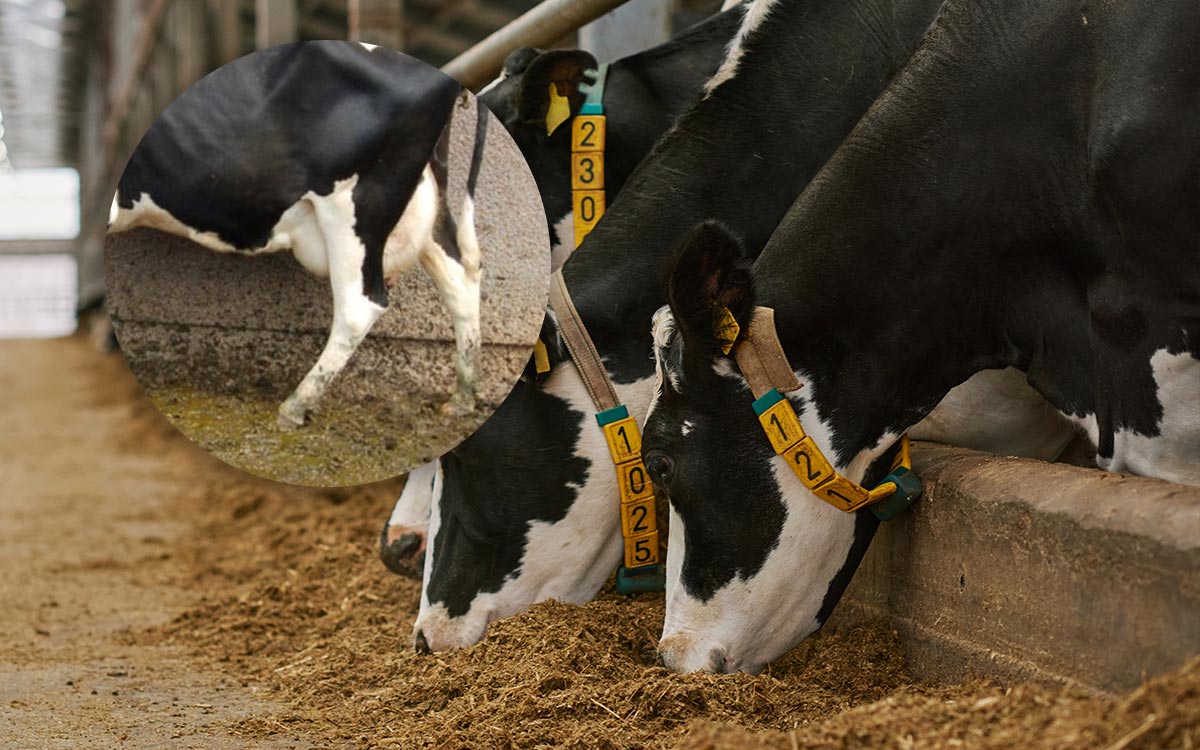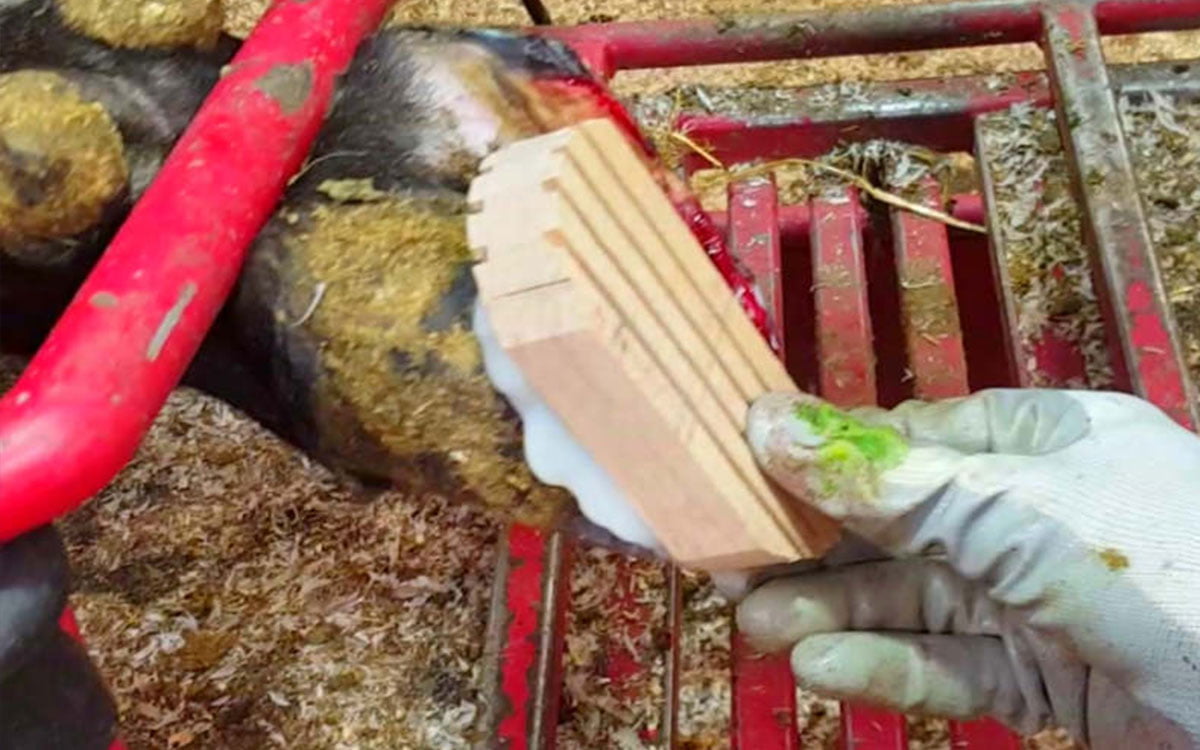Table of Contents
Lameness in cows significantly impacts animal welfare and farm productivity. Lameness causes pain and discomfort for the affected cows and decreases milk production and reproductive issues. With these challenges in mind, farmers must implement effective strategies for managing and preventing lameness in their herds. In this article, I will delve into the various aspects of cow lameness and explore practical solutions that can be applied to dairy farms.
Combating cows’ lameness starts with recognizing the usual culprits, such as Digital Dermatitis. Timely treatments and keeping barns clean and dry can limit infection risks. Regular footbaths and hoof sprays are useful preventive measures.
Table of Contents
Infectious Causes of Lameness in Cows
One of the most common causes of lameness in cows is digital dermatitis. This infectious hoof disease, also known as hairy heel warts, primarily affects the skin on the back of the cow’s foot, specifically the area around the heel bulbs. Understanding the causes and symptoms of digital dermatitis is crucial for effective prevention and management.
Digital dermatitis is a complex condition that can significantly impact cows’ overall health and well-being. The bacteria enter the skin through small abrasions or cuts, leading to painful sores or ulcers on the heel bulbs.

Known as Mortellaro Disease
Digital dermatitis (DD), also known as Mortellaro Disease or Italian footrot, is an inflammation of the skin around the cow’s hoof. The disease was discovered in the early 1970s by an Italian veterinarian, Dr. Mortellaro.
Can spread around
It is most commonly found on the hind feet, more specifically at the back of the hoof, and between the bulbs of the heels. The disease can spread around the foot and into the cleft between the claws.
Causes and Symptoms of Digital Dermatitis
Digital dermatitis is primarily caused by the bacteria Treponema, which is commonly found in the environment. The combination of the bacteria and certain environmental factors contributes to the disease’s development. Wet and dirty conditions provide an ideal breeding ground for the bacteria, increasing the risk of infection.
Cows housed in barns with inadequate drainage and poor hygiene are more likely to contract digital dermatitis. The bacteria can thrive in manure and moist bedding, making regular cleaning and maintenance essential for prevention. The infection can also spread through contact with infected animals or contaminated equipment.
Early signs of digital dermatitis include open skin and long hairs on the lesion. If left untreated, the infection can progress into severe lesions, causing extreme discomfort for the affected cows. The pain and discomfort can lead to reduced milk production, decreased fertility, and weight loss. Cows with digital dermatitis are more prone to other hoof-related issues, such as sole ulcers and white-line disease. Prompt treatment can help prevent the infection from worsening and reduce the risk of long-term complications.
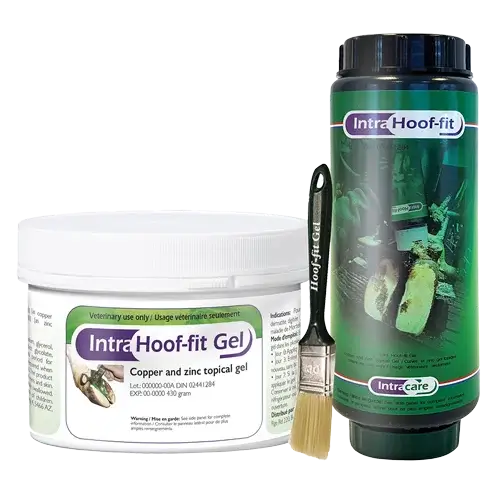
Hoof-fit Gel
Maintaining clean and dry bedding for the cows is essential to prevent and manage Digital Dermatitis. Regularly cleaning the barn, removing manure, and providing proper drainage can significantly reduce the risk of infection. Implementing a herd protocol with regular footbaths and hoof spraying sessions can also help control the spread of bacteria and promote hoof health.
The Impact of Digital Dermatitis on Cow Health
When left unaddressed, Digital Dermatitis can significantly impact cows’ overall health and well-being. The pain and discomfort caused by the infection can lead to reduced milk production, decreased fertility, and weight loss. Cows affected by Digital Dermatitis may be reluctant to walk or stand, resulting in decreased activity levels.
In addition to the immediate effects on cow health, Digital Dermatitis can have economic consequences for farmers. The cost of treating and managing the disease, including veterinary care, labour, and treatments, can be substantial. Moreover, the reduced productivity and potential culling of affected cows result in financial losses for the farm.
Preventing Digital Dermatitis requires a comprehensive approach that includes proper hygiene, regular hoof care, fast treatment protocol and effective biosecurity measures. You should work closely with your veterinarian and hoof trimmer to develop a tailored prevention and management plan for your herd. By implementing proactive measures, the risk and damage of Digital Dermatitis is minimized and ensures their cows’ optimal health and welfare.
Other Infectious Hoof Diseases in Cows
Foot rot is a common but treatable disease in cattle. The disease affects the joint above the hoof, causing lameness and decreased productivity. Caused by the Fusobacterium necrophorum and Dichelobacter nodosus bacteria, foot rot is highly contagious and prevalent in humid, wet, or rough environments.
Interdigital Dermatitis (ID) is comparable to wet eczema, with a distinctive odour due to bacterial infection (typically Bacteroides nodosus). The disease is prevalent in cattle housed in moist conditions, primarily affecting the hind feet with symptoms like unusual horn growth and splits in the heel area of the claw.
Both of these hoof diseases can be treated and often prevented. I recommend contacting your veterinarian if you have a case of foot rot in your cows. These cows need an antibiotic treatment to ensure timely and speedy healing. Prevention is often obtained by having the proper footbath protocols in place.

Digital Dermatitis
It is most commonly found on the hind feet, more specifically at the back of the hoof, and between the bulbs of the heels. The disease can spread around the foot and into the cleft between the claws.

Foot Rot
Footrot is a highly infectious disease that can affect the productivity and profitability of a cattle herd. This bacterial infection is caused by the Fusobacterium necrophorum and Dichelobacter nodosus bacteria.
Effective Strategies for Controlling Lameness
Controlling lameness in cows involves a multi-faceted approach that combines proper hoof care, identifying and treating common lameness issues, and implementing preventive measures such as nutrition and housing management. The hoof disease chart is a great starting overview of diagnosing hoof problems.
Lameness is a significant concern in the dairy industry, as it can lead to decreased milk production, reproductive problems, and overall poor animal welfare. By implementing effective strategies, we can minimize the occurrence of lameness and ensure the well-being of their cows.
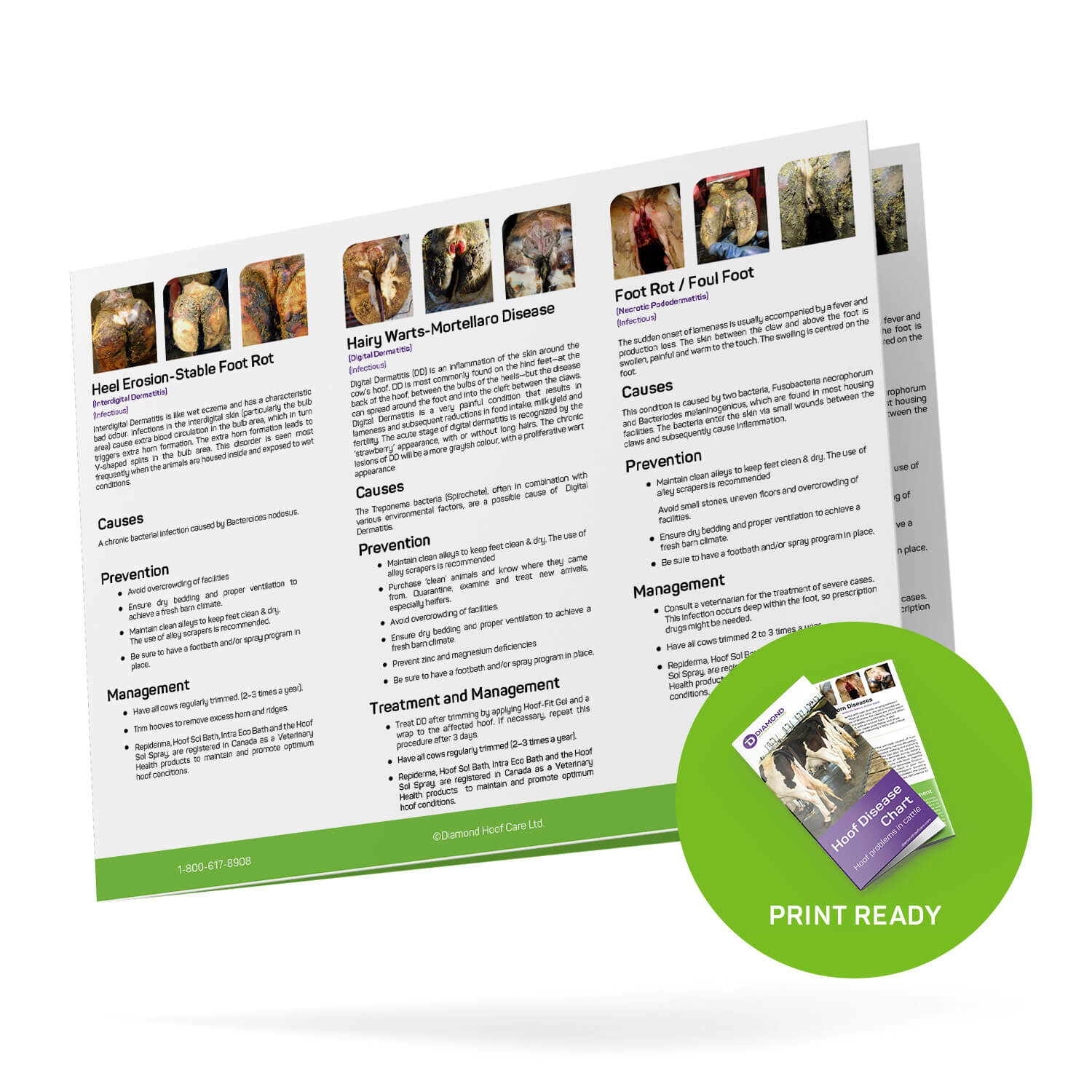
Hoof Disease Reference Chart
Identifying and Treating Common Lameness Issues
A comprehensive hoof care program is essential for early identification and timely treatment of lameness issues. Regular hoof trimming, performed by a trained professional, helps maintain proper hoof balance and prevents problems such as long toes and overburdened heels.
During hoof trimming sessions, it is crucial to carefully examine each cow’s hooves for any signs of lameness. This includes checking for redness, swelling, or heat and inspecting the hooves for any visible lesions or abnormalities. Farmers can quickly identify and address any potential issues by closely monitoring the cows’ hooves before they escalate.
Prompt treatment of conditions like sole ulcers, white line disease, and hoof abscesses is crucial to prevent them from escalating and causing long-term lameness. Depending on the severity of the condition, treatment may involve applying topical treatments, administering pain relief medication, or even surgical intervention in severe cases.
Antibiotics may sometimes be necessary to address bacterial infections associated with hoof issues. However, it is essential to consult with a veterinarian to ensure the responsible and judicious use of antibiotics, following all relevant guidelines and regulations. Antibiotics should only be used when necessary and under professional supervision to prevent the development of antibiotic resistance.
Preventing Lameness Through Proper Nutrition and Housing:
Providing cows with a balanced diet that meets their nutritional needs prevents lameness. A diet rich in essential nutrients, such as calcium, phosphorus, and biotin, promotes strong and healthy hooves.
Consultation with a livestock nutritionist can help formulate a customized feeding program tailored to the specific requirements of the herd. The nutritionist will consider factors such as the cow’s age, stage of lactation, body condition score, and overall health to develop a diet that optimizes hoof health.
Proper housing conditions are essential for preventing lameness. Cows should have access to clean, dry, and well-bedded resting areas, allowing them to lie comfortably and reducing the risk of developing hoof issues.
Regular barn maintenance, including proper ventilation and adequate drainage, is crucial to create an environment that minimizes the risk of lameness. Good ventilation helps reduce humidity levels, preventing the buildup of moisture that can lead to hoof problems. Additionally, proper drainage ensures that the resting areas remain dry, reducing the chances of bacterial and fungal infections.
Implementing strategies to control lameness requires a proactive approach and continuous monitoring. By prioritizing hoof care, promptly addressing any lameness issues, and providing optimal nutrition and housing, you can significantly reduce the occurrence of lameness and improve your cows’ overall health and welfare.
Taking Care of Cows’ Hooves: Preventative Measures
Preventing lameness in cows begins with proactive measures that focus on maintaining hoof health and preventing problems from developing in the first place.
Cows, like any other animals, rely heavily on their hooves for mobility and overall well-being. Hooves provide support and stability, allowing cows to walk, run, and graze. Therefore, farmers must prioritize preventative measures to ensure the health and longevity of their cows’ hooves.
Regular Hoof Trimming and Maintenance
Regular hoof trimming is critical to preventive hoof care. By scheduling routine trimming sessions, we can ensure that the hooves are kept at the proper length and balanced. Trimming not only helps prevent overgrown hooves but also assists in the early detection of potential hoof issues that can lead to lameness.
During trimming, a professional hoof trimmer carefully examines each cow’s hooves, looking for signs of damage, infection, or abnormal growth. They use specialized tools to remove excess hoof material and shape the hooves to maintain proper weight distribution and balance. This process not only helps prevent lameness but also promotes optimal hoof health.
In addition to the physical benefits, regular hoof-trimming sessions provide an opportunity for closely monitoring the overall health of the cows. Trimmers can advise and recommend individual cow needs and identify any anomalies that may require further attention. This collaborative approach between farmers and trimmers ensures that the cows receive the best care for their hooves.

Routine Cow Hoof Trimming
Regular hoof trimming is critical to preventive hoof care. By scheduling routine trimming sessions, we can ensure that the hooves are kept at the proper length and balanced.
Key Benefits
In addition to the physical benefits, regular hoof-trimming sessions provide an opportunity for closely monitoring the overall health of the cows.
Importance of Clean and Dry Bedding for Hoof Health
Clean and dry bedding is essential for maintaining healthy hooves and preventing lameness. Bedding materials, such as sand, sawdust, or rubber mats, should be regularly cleaned and replaced to prevent the accumulation of moisture, manure, and bacteria.
Moisture and manure can create a breeding ground for bacteria, fungi, and other microorganisms, leading to hoof infections and diseases. By providing clean and dry bedding, farmers reduce the risk of these harmful organisms thriving and causing harm to the cows’ hooves.
Providing comfortable bedding for cows is essential for their productivity and well-being. Cows need to lie down and rest to make milk. A soft and clean surface prevents pressure sores (hock lesions), ultimately reducing the likelihood of lameness and promoting a better overall cow welfare.
Treating Hoof Issues: Curative Measures
Despite every effort to prevent lameness, some cows may still experience hoof issues that require curative measures to address the problem and promote healing.
Effective Treatment Options for Hoof Infections
Hoof problems, such as sole ulcers and double soles, require proper hoof trimming and may need a hoof block to elevate the diseased claw.
The treatment of Digital Dermatitis is done with the Intra Hoof-fit Gel, a non-antibiotic product I have used since 2006 with great success. The scientific backup of these claims can be found on the National Library of Veterinary Medicine website.
For more severe cases, professional interventions, such as surgical procedures, will need to be performed by your veterinarian or a hoof care specialist to ensure appropriate treatment and follow-up care.
The Role of Antibiotics in Hoof Care
Antibiotics can be valuable in treating bacterial infections associated with hoof issues, for example, foot rot. However, their usage should be done responsibly, following veterinary advice and all relevant regulations and guidelines. The responsible use of antibiotics helps prevent the development of antibiotic resistance and ensures the continued efficacy of these critical medications.
The use of antibiotics to treat Digital Dermatitis is no longer necessary. The Hoof-fit Gel is antibiotic-free and registered in Canada as a veterinary medicine (DIN). In the scientific data, it has been proven to be 1.6 times better than antibiotics to treat Digital Dermatitis in cattle.
Exploring Hoof Care Prevention Methods
In addition to regular hoof care practices, prevention methods such as footbaths and hoof sprays can provide additional layers of protection against lameness in cows.
Pros and Cons of Footbaths in Hoof Health
Footbaths are commonly used to control and prevent infectious hoof problems. These baths can be an effective method to reduce bacterial load and prevent the spread of diseases. However, it is crucial to ensure the solution’s correct concentration and change the footbath’s content every 200-300 cow passes to prevent excessive contamination.
The main drawback of the foot bath method is that the first cow enters a clean solution, but cow number 200 enters a dirty bath. In my article ‘The Ultimate Guide to Choosing the Perfect Foot Bath for Your Dairy’, I discuss choosing the proper protocol for your farm.
Hoof Spraying as a Valuable Alternative
Hoof Sol Spray has gained popularity as a targeted approach and a more environmentally friendly method for hoof care prevention. Spraying the solution directly onto the hooves promotes a healthy hoof and skin. This method is particularly convenient for herds that aren’t suitable for traditional footbaths or for situations where footbaths are considered impractical or inconsistent.
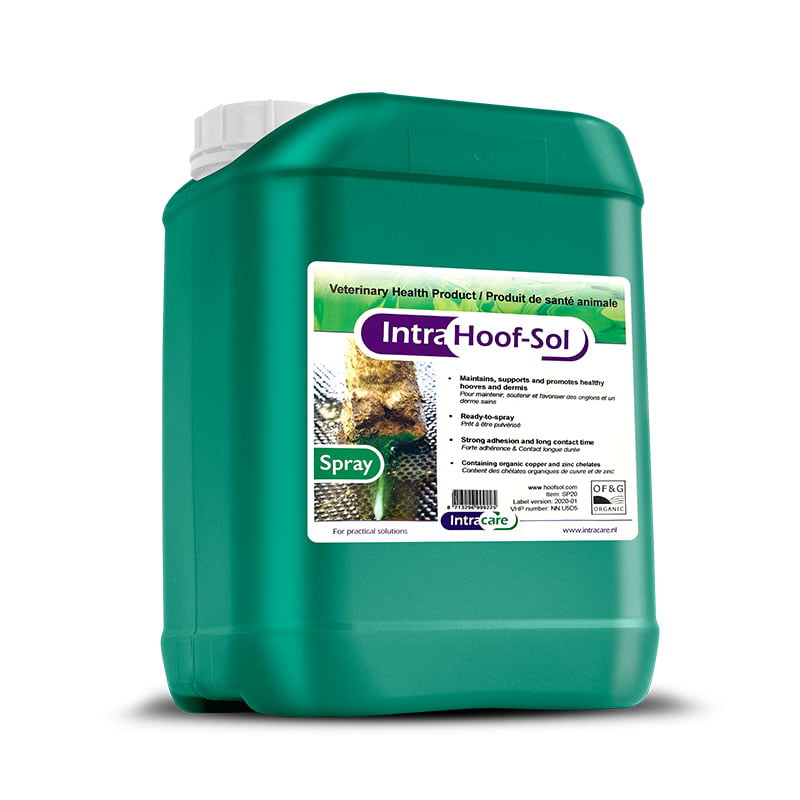
Hoof Sol Spray
Protocol for Implementing Lameness Prevention in Dairy Farms
Preventing lameness in cows requires a comprehensive approach that involves the collaboration of the entire farm team. Implementing a well-defined protocol for lameness prevention and management provides structure and consistency in farming practices. This protocol should include instructions for regular hoof trimming, hygiene practices, nutrition management, and regular health monitoring.
Regular training sessions for the farm staff also play a crucial role in ensuring everyone is equipped with the knowledge and skills to manage and prevent lameness effectively. In my Hoof Clips newsletters, I share practical solutions for various challenges in hoof care. I love to hear about the challenges you face in your herd, and you can share them by replying to our Hoof Clips newsletters.
Last Remark for Strategies Around Lame Cows
Effectively managing and preventing lameness in cows should be a top priority for dairy farmers. By understanding the causes and symptoms of lameness issues, implementing proper hoof care practices, and adopting preventive measures, we can enhance cow comfort, improve herd productivity, and ensure their cows’ overall health and well-being.
With a multi-faceted approach that combines treatment and prevention, you will minimize the risk of lameness and provide your cows with an environment that promotes hoof health and animal welfare. It pays to trim!
